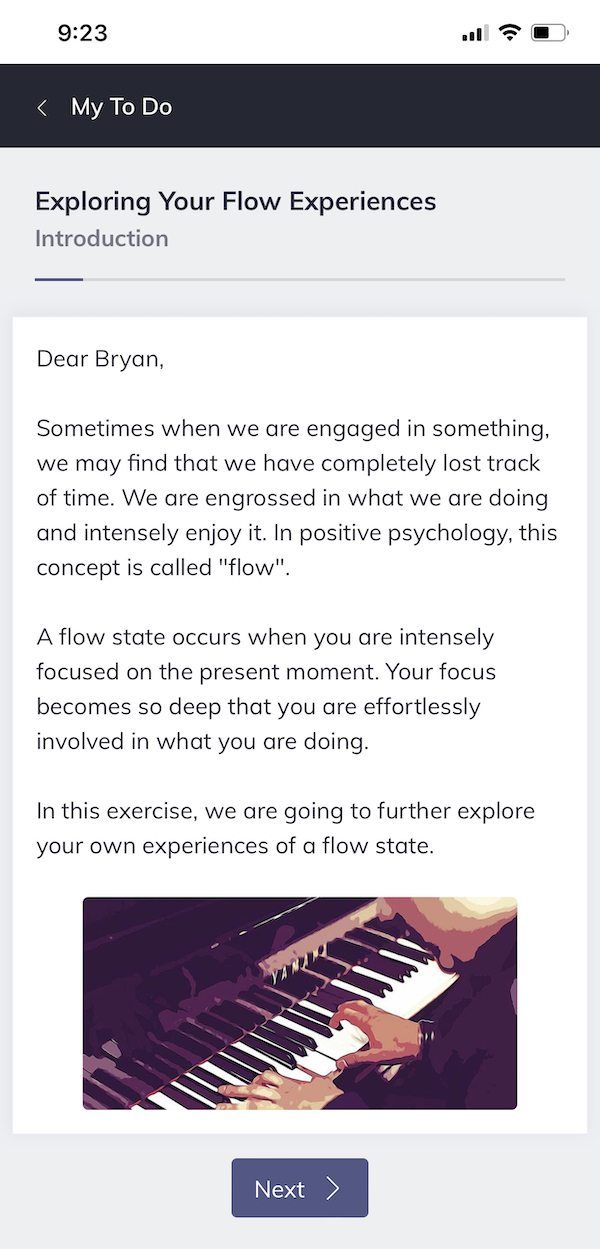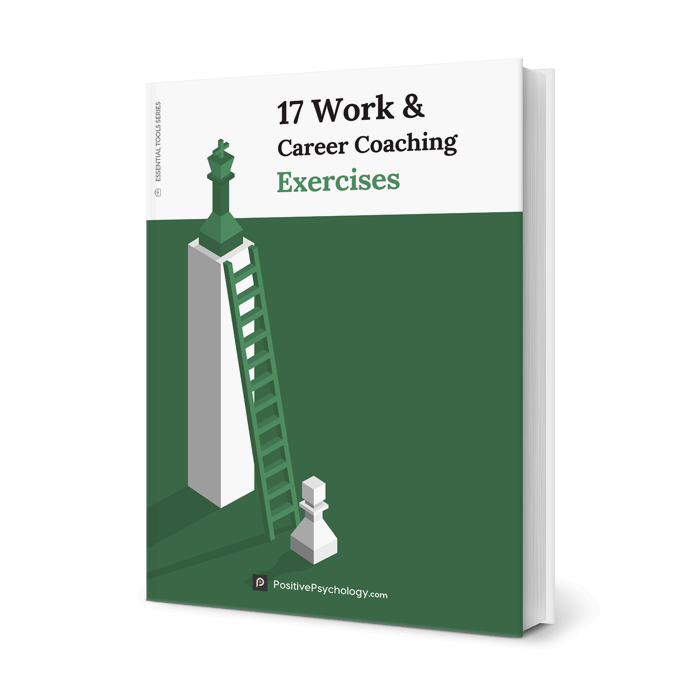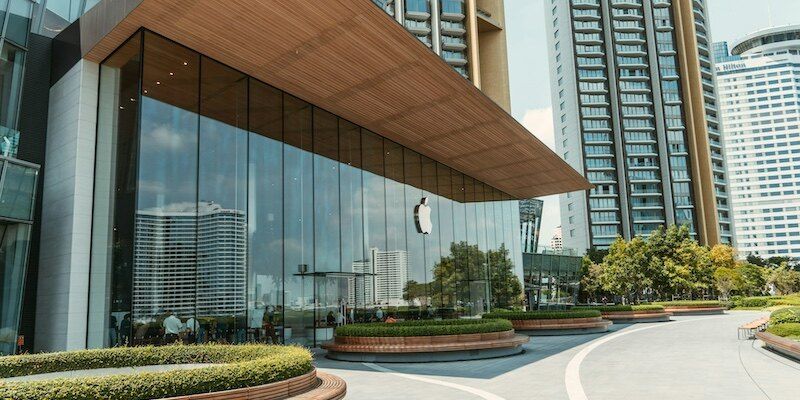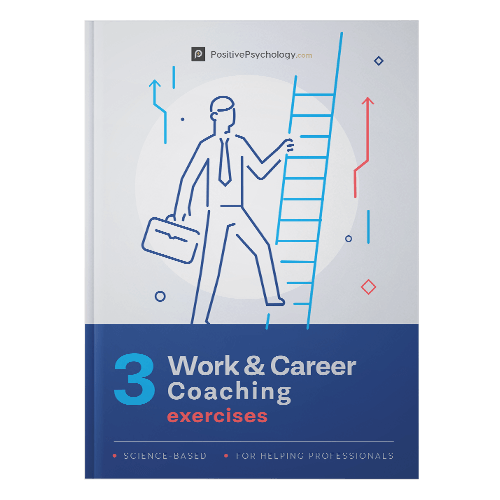Employee Wellbeing: 43 Ways to Create a Happier Workplace
 Witters (2019) found that average work-related wellbeing across organizations throughout the United States has dropped significantly year-over-year since 2016.
Witters (2019) found that average work-related wellbeing across organizations throughout the United States has dropped significantly year-over-year since 2016.
Further, findings from the World Happiness Report point to a 10% drop in happiness at work since COVID-19 was declared a global emergency in March 2020 (Cotofan, De Neve, Golin, Kaats, & Ward, 2021).
As evidence of declines in worker wellbeing continues to emerge, employees are now turning to their employers for solutions to the growing threats to their happiness and health.
Likewise, attitudes in the public consciousness are shifting and increasingly requiring employers take action on workplace wellbeing through evidence-based initiatives and incentives. We look here at what it means for employers to support their employees’ wellbeing.
Before you continue, we thought you might like to download our three Work & Career Coaching Exercises for free. These detailed, science-based exercises will help you or your clients identify opportunities for professional growth and create a more meaningful career.
This Article Contains:
- Employee Wellbeing: Why Is It Important?
- 16 Benefits According to Research
- 5 Real-Life Examples of Wellbeing Programs
- How to Improve Employee Wellbeing: 23 Ideas
- Best Initiatives & Strategies for Your Program
- 10 Survey Questions & Questionnaires
- Fostering Wellbeing: Best App & Platform
- Improving Wellbeing With Quenza
- Our Positive Psychology Toolkit & Resources
- A Take-Home Message
- References
Employee Wellbeing: Why Is It Important?
According to world-leading wellbeing researcher Sabine Sonnentag (2015, p. 261), wellbeing
“refers to a person’s hedonic experience of feeling good and to the eudaimonic experience of fulfillment and purpose.”
An individual’s wellbeing is dynamic; it is constantly in flux, changing depending on a number of external and internal factors.
Examples of such factors in a work context include stressors like time pressure or an inadequate skill repertoire, resources like work flexibility and creativity, and interpersonal factors such as positive relationships or a charismatic disposition.
While organizational research has traditionally focused on symptoms of ill-being in different configurations, such as those of burnout, exhaustion, and disengagement (Sonnentag, 2015), there is growing recognition that positive psychological states indicative of wellbeing are just as worthy of investigation. This is, in part, because states such as flourishing and thriving have the potential to drive effective performance.
Likewise, with the spread of positive psychology since the early 2000s, positive experiences at work are increasingly viewed as outcomes worth seeking in and of themselves, irrespective of their potential impact on a firm’s bottom line (Wright, 2003).
16 Benefits According to Research

Three that have received particular attention among scholars are increased engagement, performance, and productivity.
Fostering engagement
Work engagement is commonly thought to be one manifestation of employee wellbeing, characterized by dedication, vigor, and absorption (González-Romá, Schaufeli, Bakker, & Lloret, 2006).
Conceptually, work engagement emphasizes the experience of energy directed toward our work, which has been shown to have positive outcomes, including the following (Bakker, Demerouti, & Sanz-Vergel, 2014):
- Cardiovascular health
- Positive emotions
- Intimate partner happiness
- Openness to new experiences
- Creativity
- Active learning
- Extra-role performance (i.e., going above and beyond)
- Job crafting
- Performance
- Client satisfaction
Improving performance
Over time, factors like work stressors and resources may lead to changes in wellbeing, which in turn, positively affect several types of performance.
- Experiencing wellbeing in the form of recovery during leisure time predicts increases in self-rated core task performance over six months (Binnewies, Sonnentag, & Mojza, 2009).
- Several studies point to wellbeing as a driver of different types of extra-role performance, such as proactive behavior, personal initiative, and organizational citizenship behavior (Sonnentag, 2015).
- Low levels of burnout (suggestive of ill-being’s absence) are positively related to decreased employee absence (Ybema, Smulders, & Bongers, 2010).
Enhancing productivity
It’s widely believed that a happy worker is a productive worker, and research findings back up this common adage (Wright & Cropanzano, 2007).
In this context, productivity typically regards a worker’s rate of production or performance relative to time. Once again, research has found several links between wellbeing and productivity.
- An experimental study in which some participants received a happiness-enhancing treatment (e.g., chocolate) found that the resulting increases in happiness predicted increases in productivity on a mathematics task of up to 12% (Oswald, Proto, & Sgroi, 2015).
- High self-reported wellbeing has been shown to predict productivity in samples of workers in the fields of healthcare, insurance, and manufacturing even more strongly than disease status (Gandy, Coberley, Pope, Wells, & Rula, 2014).
- One large-scale study of more than 10,000 young adults in the United States found that those with higher positive affect and life satisfaction in their teens and early 20s earned significantly more income than their less-happy/satisfied siblings later in life (De Neve & Oswald, 2012).
5 Real-Life Examples of Wellbeing Programs
Here are five examples of real-life workplace wellbeing programs and initiatives drawn from companies in the tech industry (Rise, 2019).
- Facebook’s campus in Palo Alto has a bike-sharing program that allows team members to cycle around rather than drive.
- Google provides its employees free access to paramedical services, such as massage therapy.
- Cloud computing company Bandwidth offers a 90-minute ‘Fitness Lunch’ to their team, allowing them enough time to get a workout in or head home for a fresh lunch rather than fast food.
- The IT service company Accenture provides employees with access to financial assistance programs and confidential support for stress, substance abuse, depression, and anxiety.
- Many innovative companies, including Zappos, Facebook, and Asana, provide nap rooms for employees in need of some afternoon rest.
How to Improve Employee Wellbeing: 23 Ideas

Ultimately, the most appropriate solution for your organization should become clear following a comprehensive assessment or audit (see 10 Survey Questions & Questionnaires below).
Once you’ve determined the particular need for an intervention, there are many options you can use. Here are just a few ideas, drawn from research on the Australian government’s WorkWell intervention program (Spence, 2015):
- Flu vaccinations
- Ergonomic assessments
- Blood pressure tests
- Gym memberships or on-site equipment
- Company wellbeing challenges
- Fruit deliveries
- Employee assistance programs (e.g., confidential counseling)
- Outplacement services
- Critical incident debriefing
- Workplace coaching
- Positive psychology seminars
- Meditation
- Yoga/Pilates classes
- Financial advice
- Salary packaging
- Retirement planning
- Mentoring
- Flexible work practices
- Social clubs
- Volunteering schemes
- Lunchtime sports
- Creation of green spaces
- Positive work design
Supporting Remote Employees in the Pandemic
Approximately one year into the COVID-19 pandemic, Juchnowicz and Kinowska (2021) found that many of us felt disconnected from our colleagues and were struggling to juggle work–life balance given the increased need to work from home.
The latter finding is unsurprising given that even employees who choose to work remotely face challenges to work–life balance not faced by workers who regularly go into an office or other physical workplace. This is because when working from home, it can be especially difficult to draw boundaries between work and non-work time and spaces (Ramarajan & Reid, 2013).
Further, many workers had to take on additional childcare responsibilities due to the widespread suspension of schools during the pandemic, placing additional pressure on work–home boundaries.
Regarding workplace relationships, data collected January 2021 showed that remote work significantly limited opportunities for supportive relationships with supervisors and colleagues.
Juchnowicz and Kinowska (2021) found that employees who undertook just one or two days a week of remote work during this period were significantly less likely to score ‘high’ on the workplace relationships dimension of their wellbeing assessment.
Considering these findings, Juchnowicz and Kinowska (2021) put forward the following suggestions for supporting remote-work employees during difficult times:
- Consider implementing hybrid workplace solutions that combine remote working with being in the office.
- Connect employees to information and support regarding local childcare or eldercare options.
- Offer self-development and training opportunities to help employees adapt to changing roles and demands.
- Be cautious about the effects of permanent or exclusive remote work on employees’ social connectedness, again considering hybrid or temporary solutions first.
Best Initiatives & Strategies for Your Program

- Physical ill-health prevention
Offerings that seek to safeguard employees’ physical health or lower health risk factors. - Physical health promotion
Offerings that encourage or support improved physical health status. - Mental ill-health prevention
Offerings that help employees manage adverse effects of work stress or recover from work-related trauma or personal crises. - Mental health promotion
Offerings that support employee flourishing and psychological health. - Financial wellbeing
Offerings beyond ordinary remuneration that support employees to improve their personal financial status. - Career wellbeing
Offerings beyond ordinary career management activities that work to optimize employees’ professional growth and development. - Social wellbeing
Offerings that encourage social connections within a firm. - Environmental wellbeing
Offerings that work to build employees’ connections to the natural world or design natural spaces that support optimal functioning.
There is a growing movement in business and across healthcare toward preventative health measures, which involves taking steps to prevent illness or injury before it occurs.
This approach has many benefits, including improved quality of life, the potential to treat and eradicate diseases early, and minimized medical and insurance costs (Bridge Clinic, 2017). Nonetheless, employees who are in need, such as those dealing with challenging illnesses or financial strain, deserve to be supported.
Indeed, the benefits of employee assistance programs, particularly for those with mental health challenges, family/relationships issues, or substance abuse problems, have been shown to improve not only health and functioning, but also utilitarian outcomes like productivity and work attendance (Selvik, Stephenson, Plaza, & Sugden, 2004).
Taken together, these findings point to win–win outcomes for employees and their organizations flowing from a combination of preventative and curative initiatives.
10 Survey Questions & Questionnaires
Looking for ways to assess the wellbeing of your staff? Consider administering one of the following science-backed questionnaires.
The Recovery Experience Questionnaire
An employee can be said to experience recovery from work (Sonnentag & Fritz, 2007) in either or both of the following conditions:
- They temporarily refrain from using the same functional systems or internal resources as those required for work, such as sustained attention or physical strength.
- They gain new internal resources, such as energy, self-efficacy, or positive mood.
Employees can encourage recovery at work during breaks by engaging in relaxing activities, like listening to music or playing a game of table hockey in the break room.
Besides the myriad health benefits associated with recovery, employees who regularly recover have a reduced risk of burning out and tend to perform more effectively (de Bloom, Kinnunen, & Korpela, 2014; Oerlemans & Bakker, 2014).
The Recovery Experience Questionnaire is a free 16-item questionnaire assessing four categories of recovery experience: psychological detachment, relaxation, mastery, and control (Sonnentag & Fritz, 2007).
The following are examples of ways you might apply the items from the scale assessing each of these dimensions respectively:
- To what extent do you get a break from the demands of work?
- How often do you take time for leisure?
- How often do you seek out intellectual challenges?
- To what extent do you feel you can decide for yourself what to do?
You can access the full scale and validation study for this measure for free via ResearchGate (see Table 3).
Oldenburg Burnout Inventory
Burnout is the opposite of employee engagement, characterized by exhaustion and disengagement (Demerouti, Bakker, Vardakou, & Kantas, 2003).
The Oldenburg Burnout Inventory is an extensively used 16-item tool to measure job and academic burnout, assessing both ends of the exhaustion–vigor and cynicism–dedication continua (Demerouti et al., 2003).
Here are four example questions representing each of the respective ends of these continua:
- How frequently do you feel tired before even arriving at work?
- After working, do you feel you have enough energy for your leisure activities?
- How often do you find new and interesting aspects in your work?
- How frequently do you talk about your work in a negative way?
The full scale and accompanying scoring information are freely available to download and employ in your organization or research.
Fostering Wellbeing: Best App & Platform

Quenza was designed in collaboration with the positive psychology community to streamline the delivery of psychotherapeutic, consulting, and coaching interventions with clients.
This platform, which includes a growing library of over 100 pre-prepared interventions, is simple to use and available to try for just $1, so be sure to check it out today.
Improving Wellbeing With Quenza
Let’s look at just a few useful wellbeing interventions available through Quenza’s pre-loaded Expansion Library, which you can access and try for yourself for just $1.
Exploring flow experiences
Flow – an experience in which a person feels entirely absorbed in an activity – is both a pleasant state that can be reached while undertaking work tasks and a widely used indicator of employee wellbeing.
The Exploring Flow Experiences activity on Quenza can guide an employee through the process of recalling and identifying the characteristics of work tasks that induce the state of flow. With this knowledge, the employee can then consider ways to perform their tasks so they can experience more flow in their working lives.
The Private Garden: A visualization for stress reduction
Visualization is growing in popularity as one of many strategies to help reduce stress and invoke calm via the mind–body connection.
The Private Garden Visualization is a nine-minute guided audio exercise that invites employees to transport themselves to a calm, peaceful place that is free of stress. By doing so, they can gain some psychological relief and be better able to manage and think clearly about a stressful situation.
Spending time in nature
Growing research on attention restoration theory points to time in nature as a highly effective way to replenish energy and personal resources (Basu, Duvall, & Kaplan, 2019).
The Spending Time in Nature activity guides employees through a series of simple steps to take a break and get the most out of time spent in nature. In particular, it invites employees to attend to features of the environment that capture their senses in the present moment to invoke a sense of soft focus that aids recovery.
Our Positive Psychology Toolkit & Resources
For more resources you can apply in your workplace wellbeing interventions, you will find a wealth of assessments through the Positive Psychology Toolkit©.
As an illustration, here is a breakdown of the Work & Wellbeing Survey and Strengthening the Work–Private Life Barrier tools, available through this all-in-one practitioner resource.
Work & Wellbeing Survey
As noted, engagement is an important and widely examined indicator of workplace wellbeing. The Work & Wellbeing Survey is an easy-to-use, scientifically validated assessment of work engagement, capturing employees’ felt vigor, dedication, and absorption when working.
This tool takes approximately 5-10 minutes to administer and score and is preceded by the following instructions:
The following 9 statements are about how you feel at work. Please read each statement carefully and decide if you ever feel this way about your job. If you have never had this feeling, rate the statement as ‘0’ (zero). If you have had this feeling, indicate how often you have it on a scale of 1 = a few times/year through 6 = every day.
The following is the short-form version of this tool featuring nine items. You can access the full-length version of this tool (17-items), as well as in-depth scoring information with a subscription to the Positive Psychology Toolkit©.
- At my work, I feel bursting with energy
- At my job, I feel strong and vigorous
- I am enthusiastic about my job
- My job inspires me
- When I get up in the morning, I feel like going to work
- I feel happy when I am working intensely
- I am proud of the work that I do
- I am immersed in my work
- I get carried away when I’m working
Strengthening the Work–Private Life Barrier
Cultivating a solid barrier between our work and personal life is essential for wellbeing, especially for remote workers.
This tool aims to help clients identify the behaviors, beliefs, and conditions that create metaphorical “holes” in the barrier between work and private life and take steps to restore a healthy balance between the two.
This four-step exercise takes approximately 15-20 minutes to complete.
In Step 1, clients begin by identifying the holes in their work-life barrier. In doing so, they are invited to think about factors at work or in their private life, taking the form of either behaviors, beliefs, or circumstances.
This results in six separate reflections, illustrated by the following examples:
- Work Behavior
I say “yes” when asked to do additional work, even when I am already under pressure. - Private Life Behavior
I take work-related calls and check emails at home. - Work Belief
“I have to keep working until all my tasks are done.” - Private Life Belief
“I don’t really have time for friends and family, I’m just too busy.” - Work Conditions
I often don’t have enough time to finish my tasks. - Private Life Conditions
I don’t have hobbies or activities that bring me joy.
In Step 2, clients identify some solutions to “fill” the gaps they have identified. For instance, a client who has recognized their tendency to say “yes” when they are already overwhelmed with work may commit to saying “no” moving forward. Likewise, someone who has recognized a false belief that friends, family, and hobbies are unimportant may revise this belief and realign their circumstances to create more time for all three in their schedule.
In Step 3, clients make a commitment to filling the gaps they have identified, starting with small habit-building behaviors, such as scheduling regular time out for work breaks or putting away one’s work phone after five o’clock.
In the final step, clients complete a brief reflection exploring the benefits of the exercise and new learnings on the topic of work-life balance.
Balancing Life Domains© Masterclass
If you’re looking for a way to teach others how to effectively manage attention and energy between our most valued life domains, such as family, work, and leisure, check out our Balancing Life Domains© Masterclass.
This coaching masterclass is taught by addressing the roles of attention, need fulfillment, and actions required to create life balance. Your clients will be given all the necessary tools to create a more balanced life through fun and engaging exercises and techniques.
The Balancing Life Domains© Masterclass is exclusive to Life Navigation©, our comprehensive positive psychology certification program. As such, it can only be accessed by joining Life Navigation© and cannot be purchased as a standalone masterclass.
A Take-Home Message
Recognition of workplace wellbeing’s importance is growing. As such, employees are making choices about whether to remain in roles based not only on salary but for reasons related to working conditions, work–life balance, and social connection.
Likewise, employers recognize the myriad benefits of caring for their staff, including increased engagement, performance, and happiness.
In short, there’s no better time to take action on wellbeing in your organization than today.
If you’re a manager or organizational leader, we hope this article has inspired you to consider how you might ensure the wellbeing of your staff. And if you decide to try out any of the resources we’ve recommended, be sure to let us know in the comments.
We’d love to hear from you. And don’t forget to download our three Work & Career Coaching Exercises for free.
- Bakker, A. B., Demerouti, E., & Sanz-Vergel, A. I. (2014). Burnout and work engagement: The JD–R approach. Annual Review of Organizational Psychology and Organizational Behavior, 1(1), 389–411.
- Basu, A., Duvall, J., & Kaplan, R. (2019). Attention restoration theory: Exploring the role of soft fascination and mental bandwidth. Environment and Behavior, 51(9-10), 1055–1081.
- Binnewies, C., Sonnentag, S., & Mojza, E. J. (2009). Feeling recovered and thinking about the good sides of one’s work. Journal of Occupational Health Psychology, 14(3), 243–256.
- Bridge Clinic. (2017). The importance and benefits of preventative healthcare. Retrieved from https://www.thebridgeclinic.com/blog/the-importance-and-benefits-of-preventative-healthcare
- Cotofan, M., De Neve, J. E., Golin, M., Kaats, M., & Ward, G. (2021). Work and well-being during COVID-19: Impact, inequalities, resilience, and the future of work. World Happiness Report, 153–190.
- De Bloom, J., Kinnunen, U., & Korpela, K. (2014). Exposure to nature versus relaxation during lunch breaks and recovery from work: Development and design of an intervention study to improve workers’ health, well-being, work performance and creativity. BMC Public Health, 14(1), 1–15.
- Demerouti, E., Bakker, A. B., Vardakou, I., & Kantas, A. (2003). The convergent validity of two burnout instruments: A multitrait-multimethod analysis. European Journal of Psychological Assessment, 19(1), 12–23.
- De Neve, J. E., & Oswald, A. J. (2012). Estimating the influence of life satisfaction and positive affect on later income using sibling fixed effects. Proceedings of the National Academy of Sciences, 109(49), 19953–19958.
- Gandy, W. M., Coberley, C., Pope, J. E., Wells, A., & Rula, E. Y. (2014). Comparing the contributions of well-being and disease status to employee productivity. Journal of Occupational and Environmental Medicine, 56(3), 252–257.
- González-Romá, V., Schaufeli, W. B., Bakker, A. B., & Lloret, S. (2006). Burnout and work engagement: Independent factors or opposite poles? Journal of Vocational Behavior, 68(1), 165–174.
- Juchnowicz, M., & Kinowska, H. (2021). Employee well-being and digital work during the COVID-19 pandemic. Information, 12(8).
- Oerlemans, W. G. M., & Bakker, A. B. (2014). Burnout and daily recovery: A day reconstruction study. Journal of Occupational Health Psychology, 19(3), 303–314.
- Oswald, A. J., Proto, E., & Sgroi, D. (2015). Happiness and productivity. Journal of Labor Economics, 33(4), 789–822.
- Ramarajan, L., & Reid, E. (2013). Shattering the myth of separate worlds: Negotiating nonwork identities at work. Academy of Management Review, 38(4), 621–644.
- Rise. (2019). 10 Great examples of workplace wellness programs. Retrieved from https://risepeople.com/blog/workplace-wellness-programs/
- Selvik, R., Stephenson, D., Plaza, C., & Sugden, B. (2004). EAP impact on work, relationship and health outcomes. Journal of Employee Assistance: Research Report, 34(2), 18–22.
- Sonnentag, S. (2015). Dynamics of well-being. Annual Review of Organizational Psychology and Organizational Behavior, 2(1), 261–293.
- Sonnentag, S., & Fritz, C. (2007). The Recovery Experience Questionnaire: Development and validation of a measure for assessing recuperation and unwinding from work. Journal of Occupational Health Psychology, 12(3), 204–221.
- Spence, G. B. (2015). Workplace wellbeing programs: If you build it they may NOT come… because it’s not what they really need! University of Wollongong. Retrieved from https://ro.uow.edu.au/cgi/viewcontent.cgi?article=1451&context=gsbpapers
- Witters, D. (2019). Hawaii tops U.S. in wellbeing for record 7th time. Gallup. Retrieved from https://news.gallup.com/poll/247034/hawaii-tops-wellbeing-record-7th-time.aspx
- Wright, T. A. (2003). Positive organizational behavior: An idea whose time has truly come. Journal of Organizational Behavior, 24(4), 437–442.
- Wright, T. A., & Cropanzano, R. (2007). The happy/productive worker thesis revisited. Research in Personnel and Human Resources Management, 26, 269–307.
- Ybema, J. F., Smulders, P. G., & Bongers, P. M. (2010). Antecedents and consequences of employee absenteeism: A longitudinal perspective on the role of job satisfaction and burnout. European Journal of Work and Organizational Psychology, 19(1), 102–124.
Read other articles by their category
- Body & Brain (49)
- Coaching & Application (57)
- Compassion (26)
- Counseling (51)
- Emotional Intelligence (24)
- Gratitude (18)
- Grief & Bereavement (21)
- Happiness & SWB (40)
- Meaning & Values (26)
- Meditation (20)
- Mindfulness (45)
- Motivation & Goals (45)
- Optimism & Mindset (34)
- Positive CBT (29)
- Positive Communication (20)
- Positive Education (47)
- Positive Emotions (32)
- Positive Leadership (18)
- Positive Parenting (4)
- Positive Psychology (33)
- Positive Workplace (37)
- Productivity (17)
- Relationships (46)
- Resilience & Coping (36)
- Self Awareness (21)
- Self Esteem (38)
- Strengths & Virtues (32)
- Stress & Burnout Prevention (34)
- Theory & Books (46)
- Therapy Exercises (37)
- Types of Therapy (64)




